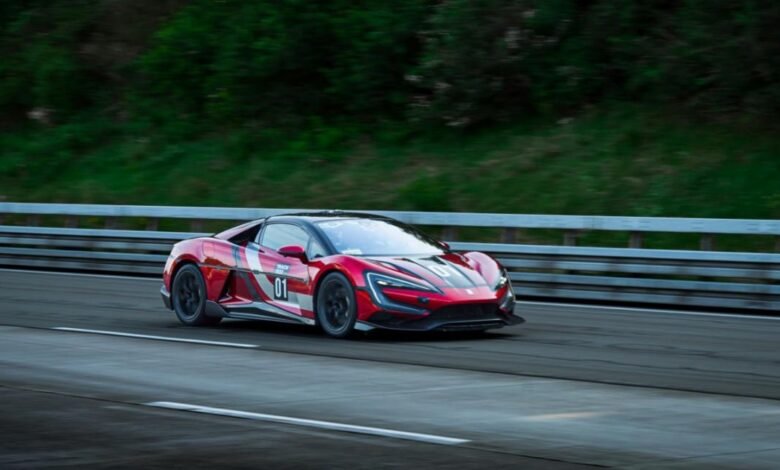The Digital Supply Chain War: BYD’s AI-Driven Surge Undermines Tesla’s Strategy in Europe

▼ Summary
– BYD has surpassed Tesla as the EU’s new electric vehicle market leader for two consecutive months, marking a major industry shift.
– BYD achieved a 201.3% year-on-year sales increase while Tesla’s registrations fell 36.6%, reversing their market share positions.
– BYD’s success is driven by offering both battery electric vehicles and plug-in hybrids, providing flexibility in an evolving market.
– The company maintains full vertical integration, controlling its own semiconductors, software, and innovative Blade Battery production.
– BYD leverages AI throughout manufacturing and vehicle systems, creating cost and efficiency advantages over competitors.
A fundamental shift is underway in the European automotive sector, moving beyond conventional brand loyalty into a deeper competition of technology and digital manufacturing prowess. Chinese automaker BYD has solidified its place as a new market leader, surpassing Tesla in new vehicle registrations across the European Union (EU) for the second consecutive month.
This transition is highlighted by startling figures released by the European Automobile Manufacturers’ Association (ACEA). While BYD reported an extraordinary year-on-year sales increase of 201.3%, claiming 1.3% of the EU market, Tesla experienced a steep decline of 36.6%. The American pioneer’s market share dropped to 1.2% from 2% a year prior. For our tech-savvy audience at DigitrendZ, these numbers signal that the competitive edge in the EV race is now driven by strategic digital efficiency and adaptable technology.
The Strategic Edge: Powertrain Flexibility
Tesla built its market position on the purity of the Battery Electric Vehicle (BEV). However, BYD’s success in Europe proves the value of a more pragmatic, adaptable engineering approach. The Chinese firm’s surge is largely propelled by its flexible product portfolio, which includes advanced Plug-in Hybrid Electric Vehicles (PHEVs) alongside its BEV models.
In an EU market still grappling with infrastructure gaps and high BEV price points, the PHEV provides a functional, lower-cost bridge technology. BYD’s readiness to meet the current infrastructure reality offers consumers a less intimidating path to electrification. This simple engineering pragmatism, coupled with aggressive pricing, has outmaneuvered Tesla’s singular, high-end focus, directly challenging the narrative that only pure-play BEVs define the future of mobility.
The True Battle: Digital Vertical Integration and AI
The most significant takeaway for the digital industry lies in BYD’s operational model: vertical integration powered by Artificial Intelligence (AI). Unlike competitors who source various components from external suppliers, BYD maintains comprehensive control over its entire digital supply chain. It manufactures its own semiconductors, develops its own in-car software systems, and critically, produces its own innovative battery technology, the Blade Battery.
AI is the silent factor behind this unprecedented efficiency. BYD utilizes AI-driven predictive analytics and digital twins in its manufacturing facilities. This allows engineers to simulate production scenarios and optimize battery assembly in real-time. This application of AI enhances product quality, significantly reduces manufacturing costs, and speeds up product cycles. Furthermore, while Tesla pioneered in-car AI for autonomous driving, BYD is rapidly catching up by integrating multi-sensor fusion (Lidar, Radar, Cameras) and developing its DiPilot system, aiming to bring advanced AI-powered assistance to a broader, more affordable range of vehicles in Europe.
This end-to-end digital control grants BYD a powerful competitive advantage. The ability to leverage AI for both manufacturing optimization and in-car functionality means BYD can reduce component failure rates and accelerate innovation. The market performance in Europe indicates that the battle for dominance is shifting from who has the flashiest technology to who has the most efficient and scalable AI-powered digital manufacturing blueprint. BYD’s surge is an unavoidable signal that established global automakers must urgently integrate deeper technological control into their operations or risk being permanently displaced by these agile giants.
A world record is often quantified by a simple number, like the YANGWANG U9X‘s speed of 496.22 km/h. However, the true legacy of this feat is built on far more than technical specifications; it is constructed with human passion and effort.
The real story resides in the people who made this speed possible. It’s found in the engineers who challenged every established assumption, fundamentally redefining the limits of automotive technology. It’s also found in the developers who successfully created a tire capable of gripping the track under extreme forces that standard physics suggested were insurmountable.
The intense focus and spirit of the entire team culminated in the driver, who instantly became the collective voice, heart, and courage of the project the moment they pressed the accelerator. This narrative moves behind the digits, revealing the faces, voices, and powerful emotions of those who poured their talent and pride into achieving one extraordinary goal. This is not a promotional or marketing account, but a deeply human story, a testament to belief, resilience, and the relentless pursuit of progress.
Watch the Video!





